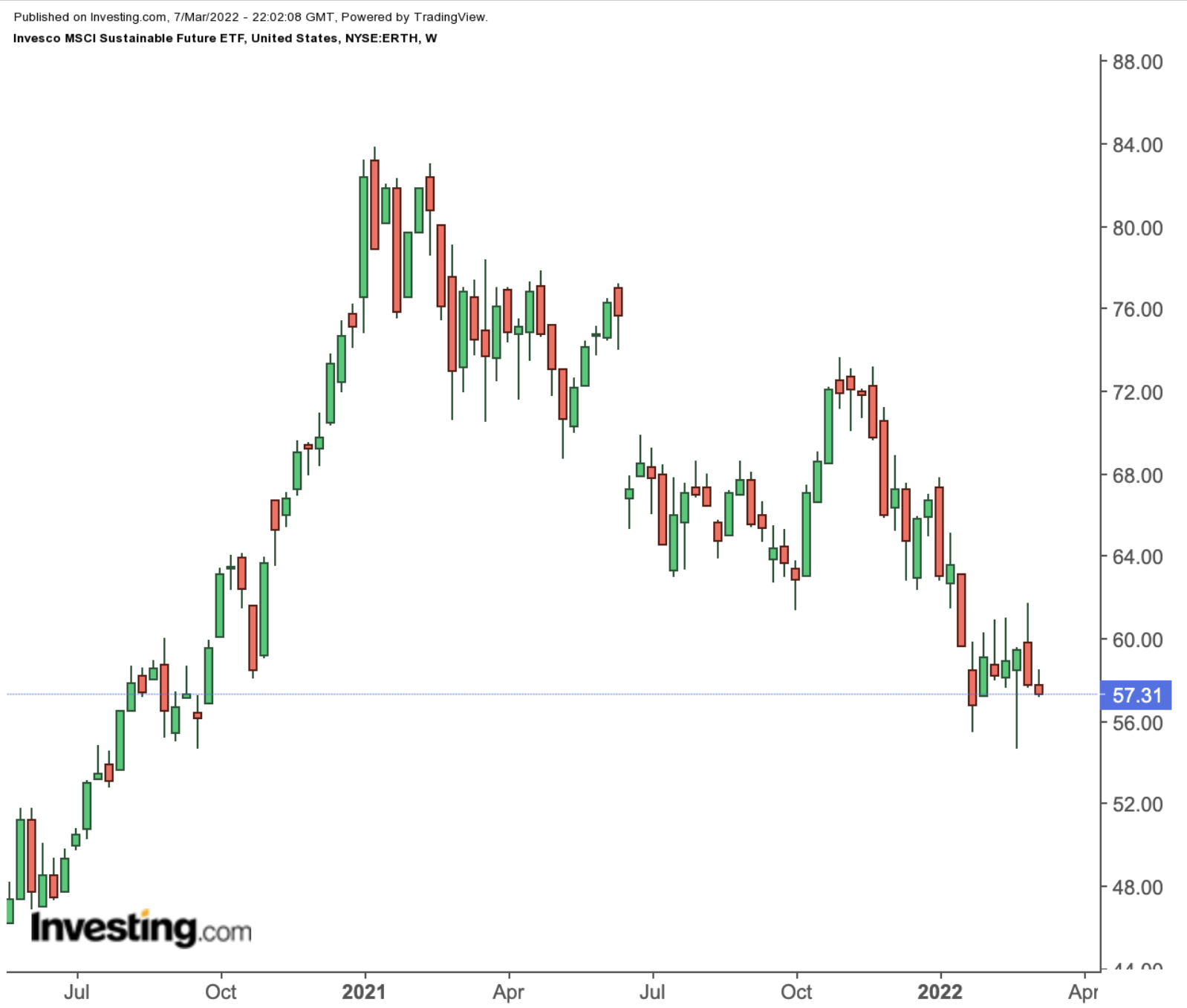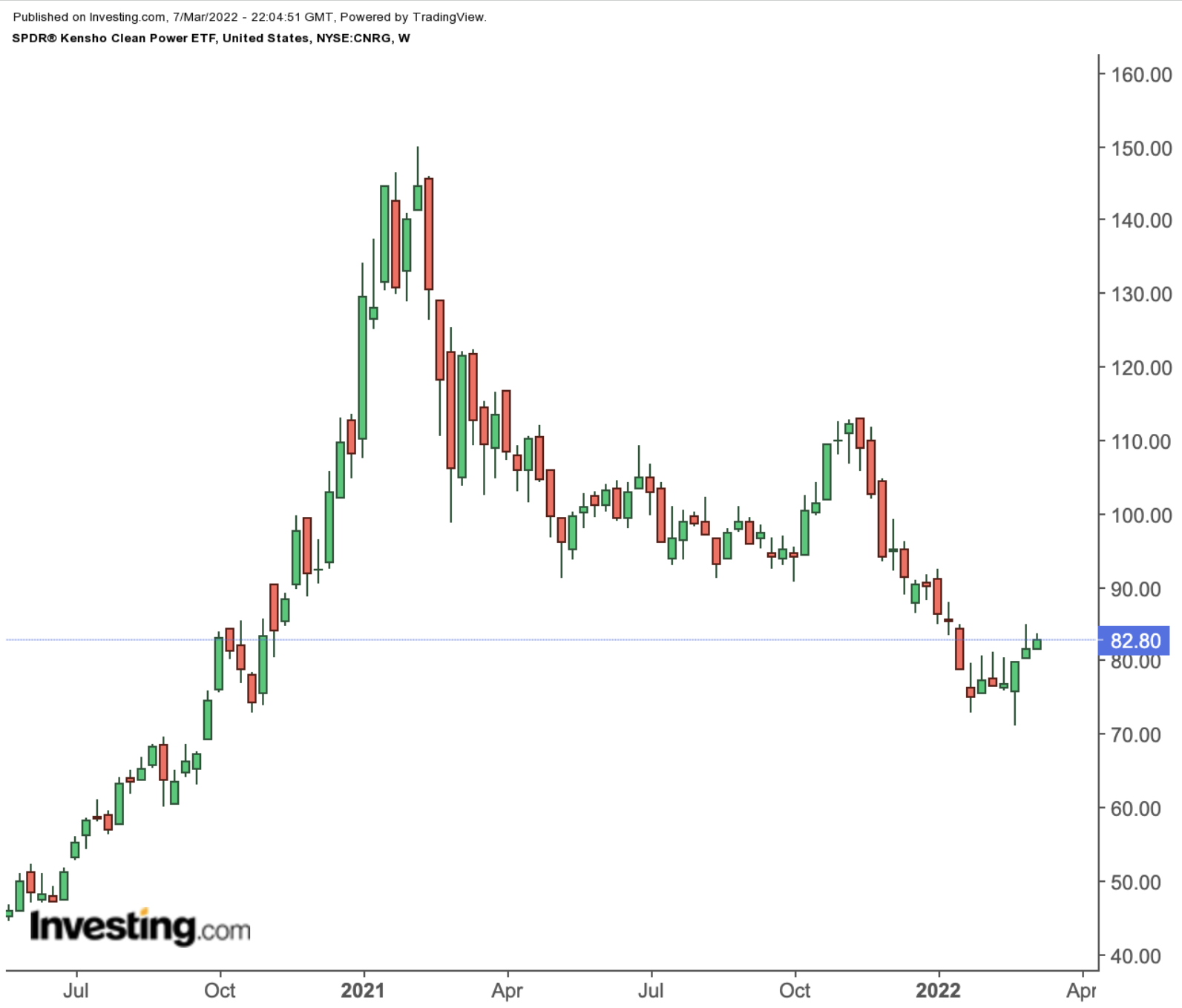Soaring energy prices have been in Wall Street’s spotlight for more than a year now. Accordingly, most of our readers have been paying close attention to the global oil benchmark Brent crude, the US oil benchmark, West Texas Intermediate, and Natural Gas futures.
However, the Russian invasion of Ukraine in late February brought a new set of pressures to global energy markets, as the conflict itself and unprecedented economic sanctions imposed on Russia by the US and Western allies disrupted some of Europe’s major energy chains, putting further stress on prices. The Dow Jones Oil & Gas index is up about 34.9% for the year.

On Monday, after reports noted that the Biden administration is willing to ban Russian oil imports from the US, Brent jumped over $130 per barrel before retreating slightly to hover at $120 levels.
Germany also recently froze the Nord Stream 2 pipeline project. These twin pipelines were expected to bring Russian natural gas directly to Germany, which relies on Russia for over half of its gas imports.
Analysts are now debating how stocks might react if the West decreases its dependence on Russian energy sources, forcing the world to search for alternatives to traditional energy supplies.
As a result, clean energy providers are increasingly gaining traction. Today’s article introduces two exchange-traded funds (ETFs) that might appeal to readers interested in renewable energy stocks.
1. Invesco MSCI Sustainable Future ETF
- Current Price: $57.31
- 52-week range: $54.61 - $78.31
- Dividend yield: 0.75%
- Expense ratio: 0.55% per year
Our first fund, the Invesco MSCI Sustainable Future ETF (NYSE:ERTH), invests in businesses that consider using global resources more efficiently. The fund follows the MSCI Global Environment Select Index, which in part chooses stocks based on several criteria, such as sustainable agriculture, alternative energy, green buildings, sustainable water, energy efficiency, and pollution control.

ERTH, which started trading in October 2006, currently has 155 holdings. The top 10 stocks in the fund account for close to 38% of net assets of $402 million.
With regards to sub-sectors, we see industrials (29.87%), real estate (18.38%), and consumer discretionary (15.90%), among others. About a third of the stocks come from the US, followed by China, Japan, Denmark, Spain, and France.
Leading holdings in the fund include wind power group Vestas Wind Systems (OTC:VWDRY); real estate investment trust (REIT) Digital Realty Trust (NYSE:DLR); Tesla (NASDAQ:TSLA); solar technology heavyweight Enphase Energy (NASDAQ:ENPH); and the Chinese electric vehicle (EV) name Nio (NYSE:NIO).
The ETF has declined roughly 21% over the past year and is down 14% year-to-date.
Yet, ERTH had seen a record high of $78.31 about a year ago, on March 25, 2021. In other words, those investors who follow technical analysis, especially price and time cycles, could possibly argue that we might see a bottom in price soon.
P/E and P/B ratios stand at 28.22x and 2.42x. Buy-and-hold investors, who expect to see a bid on alternative energy names, could regard the $55 level as a better entry point.
2. SPDR S&P Kensho Clean Power ETF
- Current price: $82.80
- 52-week range: $70.94-$122.33
- Dividend yield: 1.48%
- Expense ratio: 0.45% per year
The SPDR® Kensho Clean Power ETF (NYSE:CNRG) also invests in shares of companies leading the way in clean energy. These names typically focus on wind, solar, geothermal, and hydroelectric power.

CNRG, which started trading in October 2018, tracks the S&P Kensho Clean Power Index and holds 45 companies. The top 10 stocks comprise around a third of net assets of $269.6 million.
In terms of sectoral allocation, we see electric utilities (16.69%), electrical components & equipment (14.94%), and semiconductors (12.32%), among others.
Canada-based energy transportation and distribution group Enbridge (NYSE:ENB); natural gas utility New Jersey Resources (NYSE:NJR), which is a Dividend Aristocrat; Consolidated Edison (NYSE:ED), which provides electric, gas, and steam services; leading Chinese manufacturer of high-purity polysilicon Daqo New Energy (NYSE:DQ); and JinkoSolar (NYSE:JKS), the world’s largest solar panel manufacturer.
CNRG is down over 22% in the last 12 months and more than 8% in 2022. Trailing P/E and P/B ratios are 16.44x and 1.41x.
Like our previous fund, CNRG also hit an all-time high (ATH) in March 2021. A decline toward $80 or below would improve the margin of safety for long-term investors.
